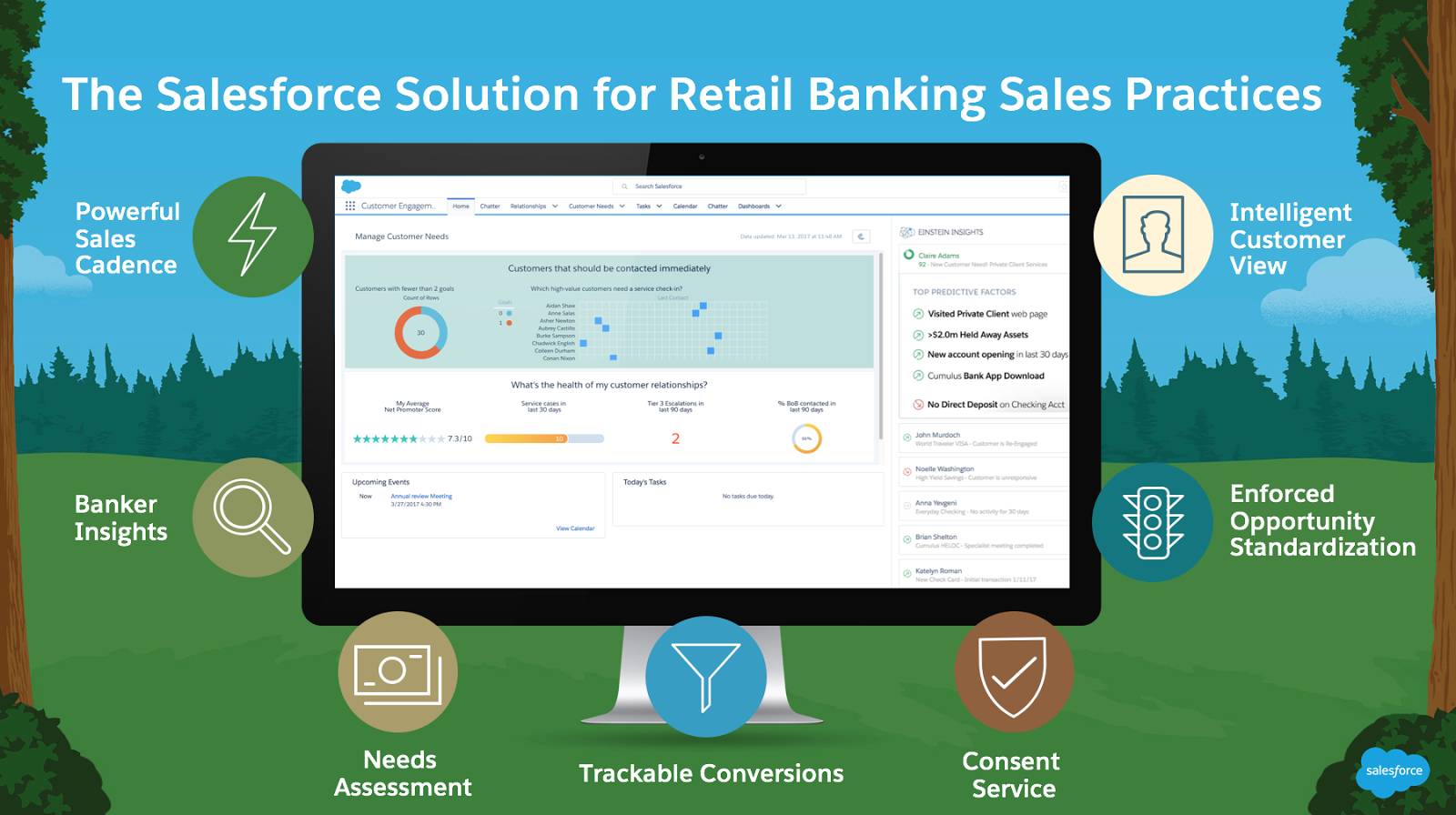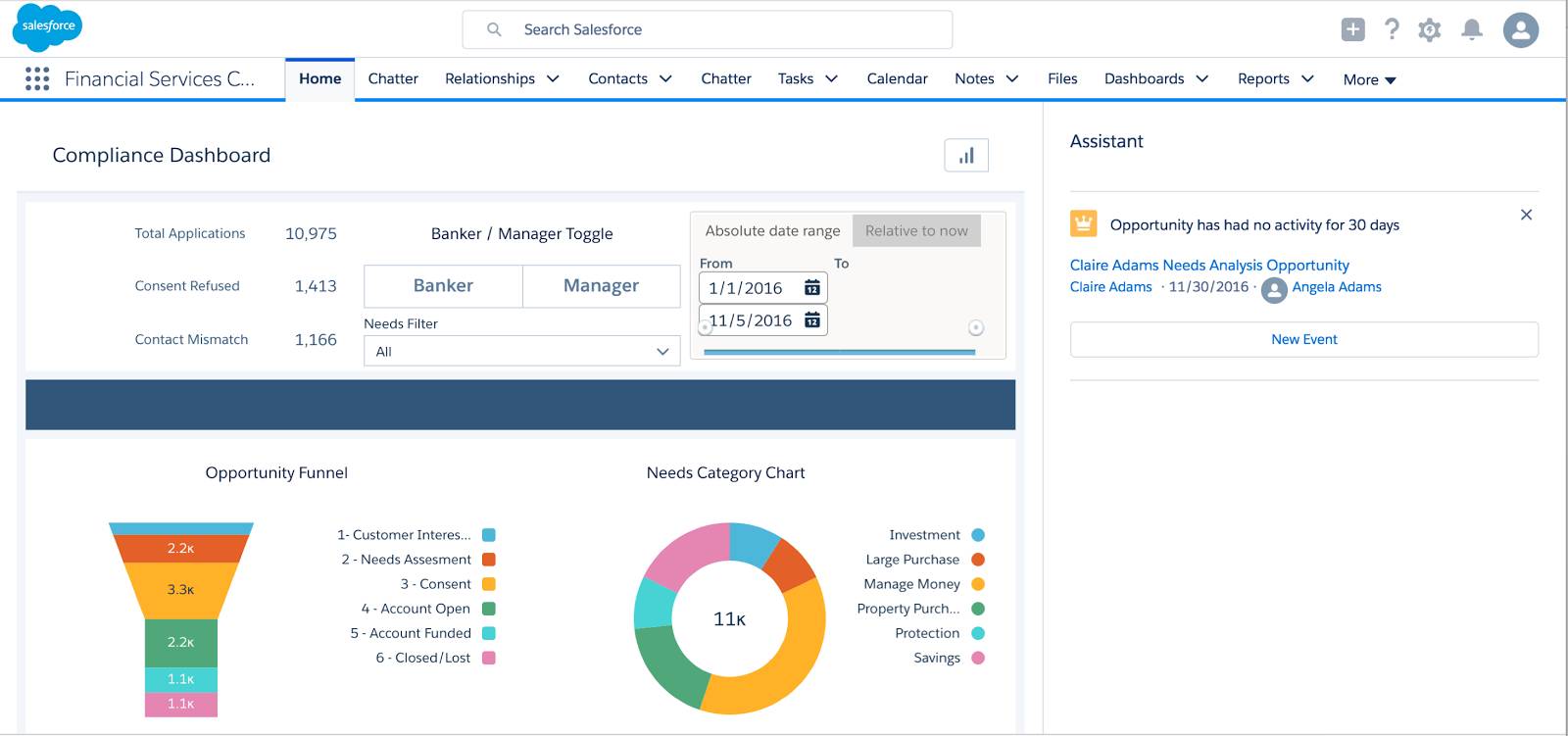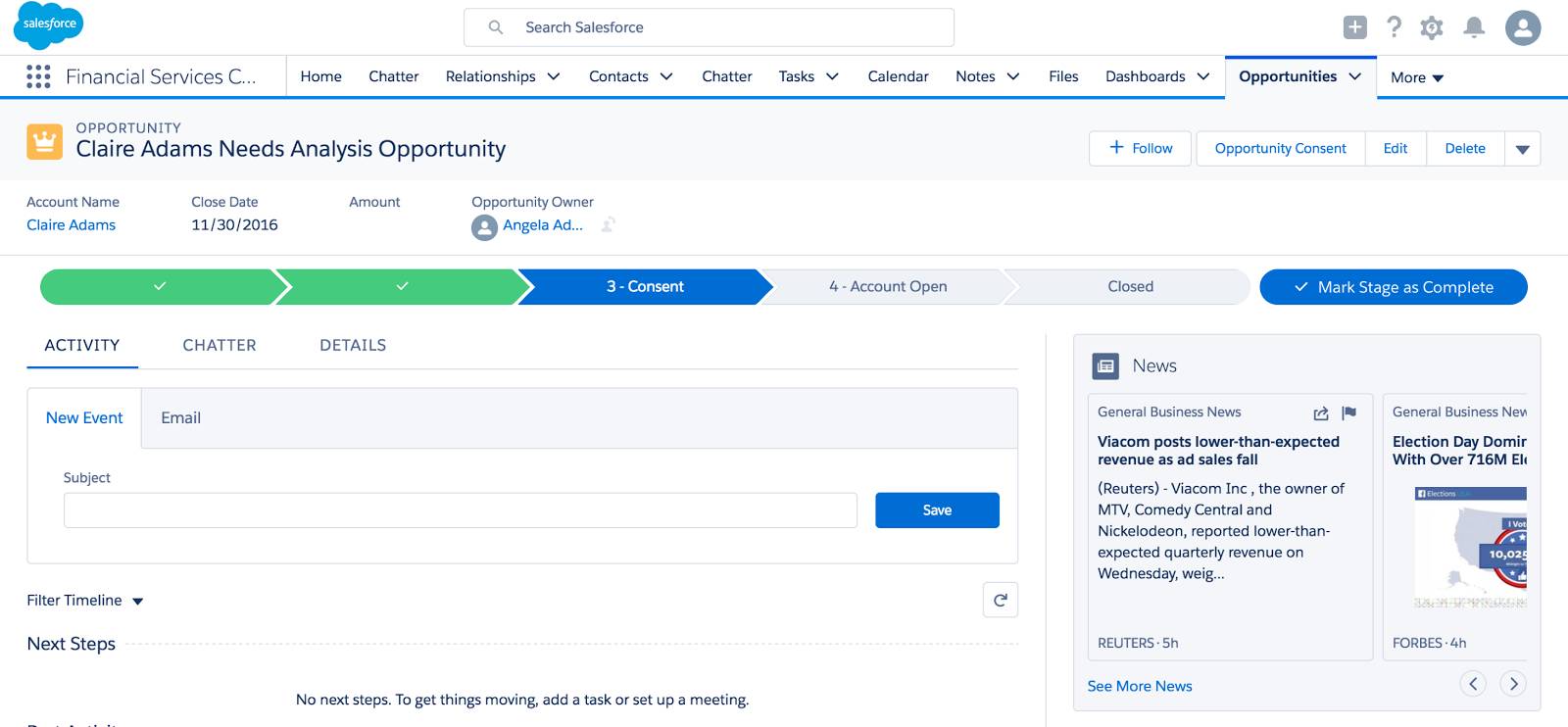Put Customer Needs at the Center of Sales Practices
Learning Objectives
After completing this unit, you'll be able to:
- Explain why a customer-centric engagement model can help improve your organization’s sales practices.
- Describe the key differences between the traditional retail banking sales model and the customer-centric approach.
- List the five components of a customer-centric retail banking sales strategy.
A Customer-Centric Engagement Model for Banks
In the Age of the Customer, banks and other financial services firms are shifting away from their long-established selling practices and moving toward a new approach. These exciting changes promise to bring financial services firms closer to their customers than ever before. They also can seem daunting to an industry that’s undergoing many other transformations—regulatory, technological, and demographic.
Here’s where Salesforce can help. We empower banks to establish thoughtfully crafted sales strategies that center around their customers’ needs.
Across financial services subverticals, regulation is a major force driving changes in how firms interact with their customers. The US wealth management industry is implementing new technology so advisors can demonstrate how they have their clients’ best interests in mind. Financial firms in Europe are preparing to meet compliance requirements as part of the European Union’s Markets in Financial Instruments Directive (MIFID) II. According to a Thomson Reuters report, 69% of financial services firms worldwide expect their compliance budgets to increase in 2017 as companies strive to fulfill their obligations.
And it’s not only regulators who are spurring financial services firms to change with the times. Consumers are an equally powerful driver of innovation.
In 2016, the management-consulting firm EY found that only 33% of customers completely trusted their bank to provide them with unbiased advice. A 2017 Salesforce study showed that only 26% of Americans strongly agreed that their bank had their best interests at heart.
Enter customer-centric banking.
Financial services firms know they need to reimagine the long-accepted norms of cross-selling and sales practices focused on the volume of products sold. Instead, they need to emphasize the levels of customer satisfaction and retention achieved. When banks succeed in aligning their own incentives with their customers’ best interests, they can connect with customers at a far deeper level—and win greater consumer loyalty than ever before.
At Salesforce, we focus on six key differences between the old selling model and the customer-centric approach. Let’s take a look at them.
|
Legacy Model
|
Customer-Centric Model
|
| Operational and channel silos prevent banks from fully knowing their customers. |
A single, enterprise-wide view of customer interactions provides insights into their financial needs and goals. |
| A product-centric approach causes salespeople to miss opportunities to address real customer needs. |
Needs assessments uncover customers’ financial goals that banking products and services can address. |
| Volume-based metrics drive aggressive and (sometimes) improper sales behavior. |
Customer satisfaction and behavior metrics encourage salespeople to offer products that fit each customer’s needs. |
| Fractured accountability makes it difficult to identify and address sales behavior that is not aligned with customer interests. |
Enforced consent authorization ensures that customers confirm products and services are aligned with their goals. |
| Disconnected processes cause salespeople to miss opportunities to provide solutions to customers’ financial needs. |
Seamless opportunity and leads-to-sale management create a consistent selling cadence. |
| Disconnected data slows organizational response time to trends in the field. |
Real-time reporting and insights help managers identify and correct issues quickly. |
To shift to this new paradigm, banks need a combination of new policies, incentives, and technology. With those in place, banks can orient their sales strategies around customer needs, rather than specific banking products or transactions. And those strategies can lead to successful, enduring relationships between banks and customers.
The Five Components of Customer-Centric Banking
At Salesforce, we’ve identified five critical components for banks making this transformation:
- Intelligent customer profiles that provide the interaction log to help you understand everything about your customers, including their interactions with your bank’s sales, service, and marketing channels and the opportunities that those interactions present. These profiles provide the foundation for connecting customers with the products and services they really need.
- Data analysis and intelligence that help you track the sales and account opening processes for individual customers and make sure they’re smooth and easy. This lets management uncover anomalies and put in place practices to correct them.
- A sales governance model that provides a consistent process for moving sales opportunities through a specific set of stages. This helps banks maximize the likelihood that their customers understand and consent to the solutions the banks offer for customers’ financial needs.
- A needs assessment and customer consent process that aligns customer needs with the right mix of products and services. That helps banks keep their customers happy and engaged with the products and services they purchase.
- New sales metrics that consider customer retention, account usage, and satisfaction as the basis for employees’ compensation goals.
The Salesforce Intelligent Customer Success Platform offers several capabilities that can help banks realize these five elements of a customer-centric sales strategy.

Salespeople can log activities and follow a prescribed set of tasks in Salesforce that drive a powerful sales cadence and a high-quality experience for all customers. In addition, salespeople and their managers can monitor their performance using dashboards that provide real-time insights into their customers’ needs, satisfaction, and account usage.

Salesforce also provides robust needs assessment functionality that guides salespeople to ask the right questions of prospects to identify the best mix of products and services for their needs. Trackable conversions show managers how opportunities progress to the final stage of account opening and funding after a salesperson performs a needs assessment.
Consent service is also available through Salesforce. It establishes a process for customers to authorize products and services and generate a log of those authorizations for reporting and audit. This helps banks satisfy compliance requirements and acquire customers who have clearly indicated a need for the bank’s products and services and are likely to remain active.
Enforced opportunity standardization helps bankers adhere to a prescribed model for advancing opportunities through specific stages, guiding customers to the right products and services at the right time.

Finally, Sales Cloud Einstein powers an intelligent and actionable customer view that identifies potential customer needs and records interactions so bankers have context for customer conversations.
Read on for a specific scenario showing how a bank can use these capabilities to delight a customer with financial services that are perfectly tailored to her needs.
Resources
Winning the Battle for Relevance—EY 2016 Consumer Banking Survey
Salesforce 2017 Connected Banking Customer Report
Copyright
Rights of ALBERT EINSTEIN are used with permission of The Hebrew University of Jerusalem. Represented exclusively by Greenlight.